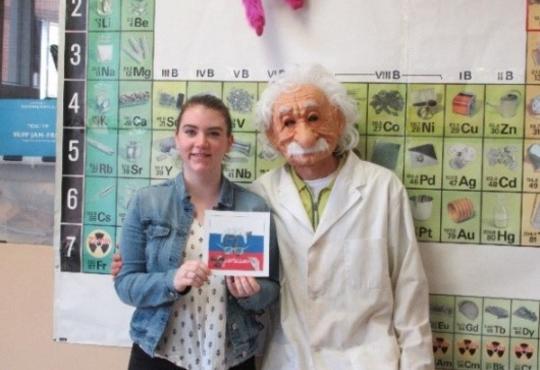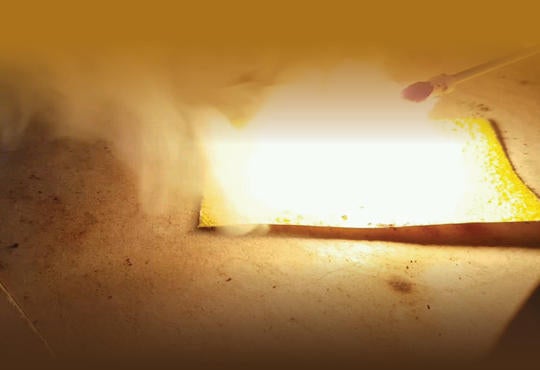A bit of history: September 23, 1916, the National School of Industrial Chemistry was inaugurated in Mexico City, by Juan Salvador Agraz, a visionary chemical engineer, who in the middle of the Mexican civil war, was able to get the funds and the support to start a chemistry school. One hundred years later, this small school that started with 70 students has become the most important chemistry school in Mexico with more than 7000 students. Last year, to celebrate our 100th anniversary, I created this puzzle and would like to share it with Chem 13 News readers. You will need to place 17 different chemical elements in order to fulfill the following requirements.
Please write a chemical elemental symbol in every labelled square along with its atomic number. No elements are repeated. The letters and numbers are there to help you place the elements; otherwise, there could be a lot of right answers; perhaps there is also a hidden message.
- After you place the chemical elements in their correct square, you will find out that the products of multiplying their atomic numbers “C,H,E” , “M,N,S” ,”3,I,R”, “E,A,T” and all the elements in the middle row, are precisely 2016.
- The addition of atomic numbers of the five elements placed in the central column is 100.
- In the middle column, there are two noble gases.
- The four elements with the lowest atomic numbers are found in this puzzle.
- In the square labeled “1” there is an element obtained from many Mexican mines — actually, it is represented with the Mexican map in the Periodic Table Project organized by Chem 13 News.
- The main component of Earth’s atmosphere goes in a square with a letter “S” and the main element for organic chemistry is in a square with a letter E.
- In the top three squares, in the square labelled with the letter “C” place the element named in honor of a mathematician and astronomer who proposed a theory that the planets revolved around the sun.
- More than 90% of the Earth’s crust is composed of minerals of the element placed in a square labeled “R”, below an alkali metal in the square “I”.
- In the middle row, there is an element that may be obtained by electrolysis of water, found just above an alkaline earth metal present in Epsom salt.
- The three bottom squares contain a halogen and two elements in group 2 of the periodic table. The one with the lowest atomic number goes in the “E” Cell.
Based on the clues on the previous page, please write a chemical elemental symbol in every labelled square along with its atomic number.

Enter your students’ correct solutions into a draw on or before December 31, 2017. Give this puzzle to challenge your students in the first week or wait until Mole Day and have it as a group competition. The prize is a pair of Hoberman Switch Pitch Balls — pictured and see ad on page 19 — donated by Educational Innovations. A prize will be awarded to both student and teacher. Go to www.teachersource.com for more information about this prize. Send your students’ solutions to Chem 13 News, A chemistry history puzzle, Department of Chemistry, University of Waterloo, Waterloo ON N2L 3G1, Canada; or email: kjackson@uwaterloo.ca.







